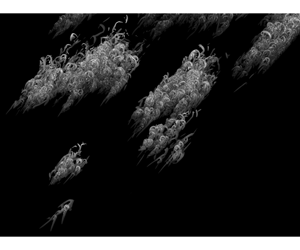Article contents
Negative skin friction during transition in a zero-pressure-gradient flat-plate boundary layer and in pipe flows with slip and no-slip boundary conditions
Published online by Cambridge University Press: 28 January 2020
Abstract

In searching for the mechanisms of boundary layer bypass transition, Schubauer & Klebanoff (NACA-TR-1289, 1956) conducted an extensive search for negative skin-friction events during the laminar-to-turbulent transition in a zero-pressure-gradient, smooth flat-plate boundary layer (ZPGSFPBL) under a wide range of free-stream turbulence intensity levels. They concluded that no evidence of incipient flow separation could be found in any part of the transition region. Although it has been known that extremely rare backflow events can occur in a fully turbulent ZPGSFPBL and in fully developed turbulent pipe flow, the Schubauer–Klebanoff conclusion regarding the total absence of negative skin friction in ZPGSFPBL transition has remained unchallenged over the past six decades. Here we report our discovery of negative skin-friction events during the bypass transition in an extensively researched representative ZPGSFPBL case, and in pipe flows with no-slip and slip boundary conditions under circumferential mode inlet disturbance, respectively. The peak probability of such events is located in the late stage of transition between the streamwise stations where the minimum and maximum mean skin friction are attained. The magnitude of the peak probability is substantially larger than the corresponding probability in the downstream fully turbulent region: in the case of no-slip pipe flow, the difference is two orders of magnitude and is primarily due to an enhanced number density of the backflow events coupled with a notable increase in the wall footprint size of such events. For both the boundary layer and pipe flows considered here, and in both the transitional and fully turbulent regions, the incipient negative skin friction is found, through instantaneous flow visualization and conditional averaging, to be induced by the head element of a reverse hairpin vortex.
JFM classification
- Type
- JFM Papers
- Information
- Copyright
- © The Author(s), 2020. Published by Cambridge University Press
References
- 11
- Cited by




